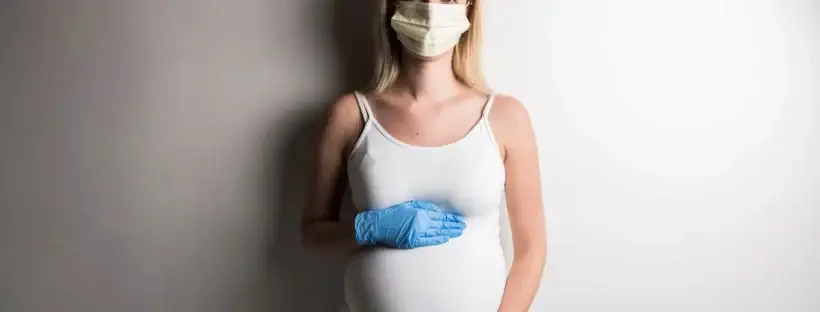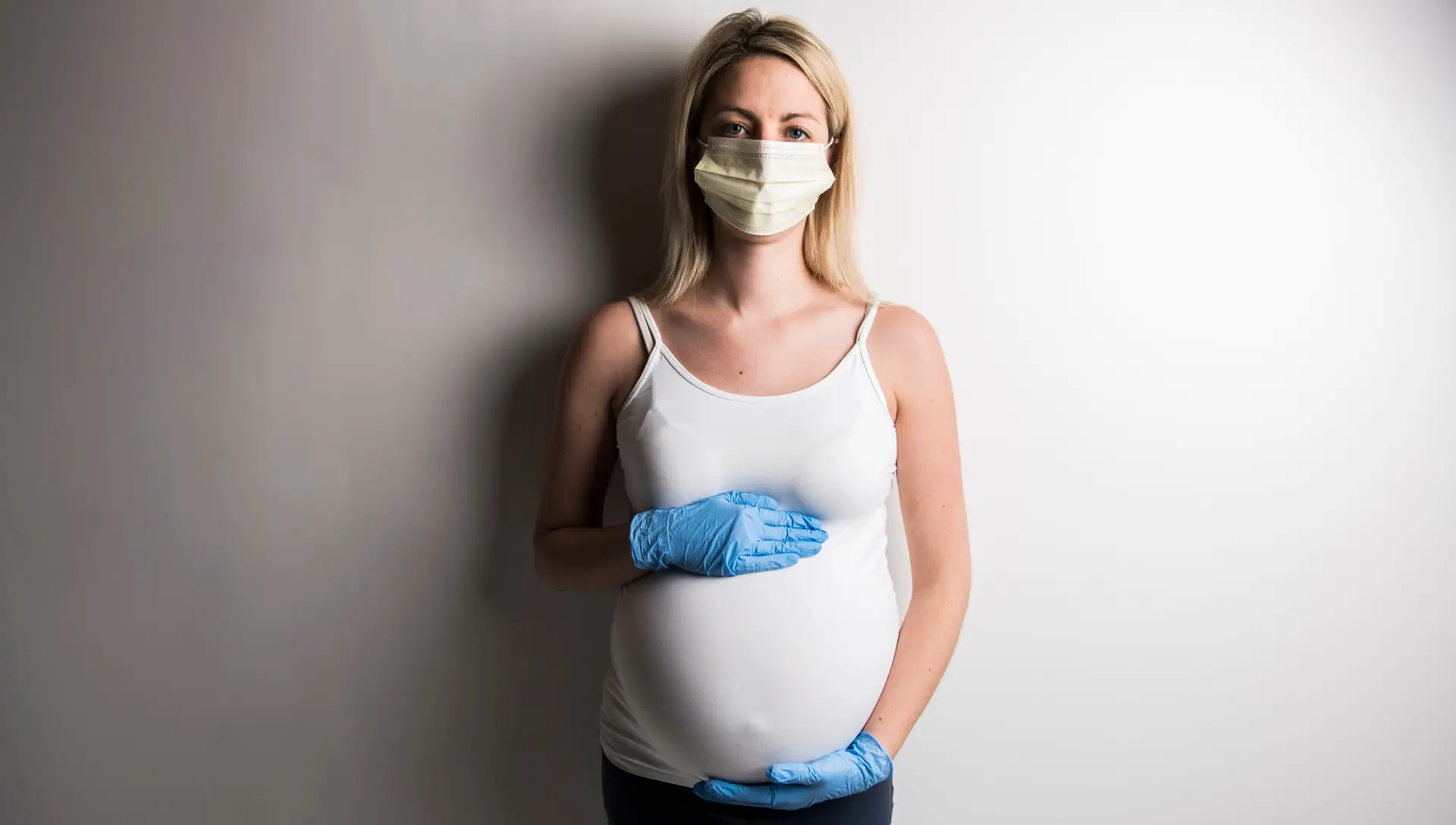Photo Credit: Shutter Stock
By the Fed is Best Foundation Health Professional Team
We have summarized the current recommendations by the Centers for Disease Control for Pregnant and Breastfeeding Mothers in the wake of the Coronavirus Pandemic (COVID-19). The American College of Obstetricians and Gynecologists have also endorsed the CDC recommendations. This information is intended to inform health care professionals and pregnant mothers who are confirmed positive for COVID-19 or persons under investigation (PUI) for COVID-19 in the hospital and postpartum settings.
The symptoms of coronavirus for pregnant and lactating mothers and infants are the same as those of the general population, which include but are not limited to:
- Fever
- Cough
- Shortness of Breath
- Fatigue
- Poor appetite
- Sputum production
- Body aches
The United States is currently has the highest number of coronavirus cases in the world, particularly in New York, New Jersey, California and Washington State. See the current world distribution of Coronavirus cases here.
Pre-Hospital Considerations (For Ambulance Transportation)
- Pregnant mothers who are confirmed COVID-19 positive or have symptoms of COVID-19 or have been in close contact with a person with confirmed COVID-19 or PUI, should notify their obstetrician before coming to the hospital.
- If coming by ambulance, you should also notify 911 of your symptoms.
During HOspitalization
- Pregnant mothers who are confirmed COVID-19 patients or PUIs should be isolated from other patients similar to other patients who are confirmed or suspected to have COVID-19.
- Visitors should be screened and should be kept to the minimum essential support members in accordance with hospital policy.
- Infants born to mothers who are COVID-19 positive or consider suspected of COVID-19 should be isolated from the general patient population. Hospital personnel should use the same precautions using personal protective equipment when caring for those infants.
Mother/Baby Contact
- There is no evidence at this time that COVID-19 is transmitted through breast milk. There is very limited evidence showing that there may be transmission of the virus through the placenta, with two infants documented to have immunological markers consistent with this. However those infants, at the time of the publication, had no symptoms of infection.
- Infants born to COVID+ mothers are at risk of COVID-19 infection through infectious respiratory secretions from the mother. Separation of mothers who are COVID-19+ or a PUI from the baby for the current recommended isolation period should be strongly considered. A screened healthy support person, may provide care to the baby during that time.
According to the CDC:
“It is unknown whether newborns with COVID-19 are at increased risk for severe complications. Transmission after birth via contact with infectious respiratory secretions is a concern. To reduce the risk of transmission of the virus that causes COVID-19 from the mother to the newborn, facilities should consider temporarily separating (e.g., separate rooms) the mother who has confirmed COVID-19 or is a PUI from her baby until the mother’s transmission-based precautions are discontinued, as described in the Interim Considerations for Disposition of Hospitalized Patients with COVID-19. The risks and benefits of temporary separation of the mother from her baby should be discussed with the mother by the healthcare team.”
- Healthy visitors and hospital staff should also wear full PPE per CDC guidelines while providing care to the infant and mother.
- A separate isolation room should be provided for the infant while they remain a PUI.
- The Chinese expert consensus on the perinatal and neonatal management for the prevention and control of the 2019 novel coronavirus infection recommends 14 days of mother/baby separation after birth.
- The decision to discontinue temporary separation should be made in consultation with physicians, infection prevention control specialists and public health officials based on the mother’s disease severity, signs and symptoms of illness and laboratory tests for COVID-19.
- If the mother, after informed consent of the risk of COVID-19 transmission, wishes to room-in or rooming in is unavoidable due to facility limitations:
- Facilities should consider providing physical barriers like a curtain with 6 feet distance between mom and baby in the room.
- Mother’s should wear protective personal equipment (PPE) as well, including a face mask as well as a gown and gloves, if available, during contact with baby. Careful hand hygiene should be performed before and after putting on the face mask and gown. The last step should be putting on clean gloves.
Dr. Denise Jamieson, chair of the Department of Gynecology and Obstetrics at Emory University, said on a CDC teleconference for clinicians on March 12, that the safest option is to separate the baby and have the mother express milk and then discard it. She stated that there could be a small risk of virus in the milk, although so far there is no evidence that this happens with COVID-19. The next safest would be to separate mom and baby, pump milk and have a healthy caregiver give the pumped breast milk in a bottle. A less-safe option would be to have mom breastfeed the baby at the breast with a mask to prevent exposing them to respiratory droplets. The least safe option would be breastfeeding directly with extended close bonding with the baby. The risk of the last option is increased the more severe the symptoms are for the mom.
In an interview with undark.com, Dr. Jessica Madden, pediatrician/neonatologist in Cleveland, Ohio, states at this time, particularly in areas heavily hit with COVID-19, that it is unlikely that facilities will have another room to separate the baby, so separation behind a curtain with six feet between mother and child while a healthy care provider cares for the child would be the only option available. She stated that “until we have more cases to be able to base recommendations on, that the absolute worst thing would be to have a baby to get really sick because we haven’t taken the proper precautions.”
Dr. Madden is also concerned that expectant mothers are thinking about changing their plans for a hospital birth to a home birth because of the coronavirus guidelines for mother/baby separation. “I think that if you are pregnant and you know you have this virus or are suspected to have the virus, that that’s extraordinarily dangerous to deliver at home.”
Effects of COVID-19 Infection to Infants < 1 year old
In a study published in the journal Pediatrics looking at 2143 children in China less than 18 years old with confirmed or suspected COVID-19, 90% had mild to moderate disease (flu-like symptoms) and 4% had no symptoms. Of the remaining children, 5% had severe disease with low oxygen saturation < 92% and 0.6% had critical illness including respiratory failure and organ dysfunction, with only 1 death. The highest incidence of critical illness (11%) occurred in children less than 1 years of age. What this tells us is that although most children do well, the most vulnerable among them are infants. This makes protecting infants, particularly newborns, from exposure to infectious respiratory secretions produced by a COVID-19+ mother of particular importance. Ways to reduce exposure to an infant include:
- Temporary separation of a COVID-19+ mom and baby and having a healthy care provider care for the infant
- Pumping breast milk and feeding expressed breast milk and/or formula through a bottle by a healthy care provider
- A COVID-19+ or PUI mother may opt to discard breast milk while she is infected out of an abundance of caution; however, if she chooses to feed her pumped breast milk, she should absolutely follow careful hand hygiene and avoid touching her face while handling collected milk.
- If temporary separation is not feasible or desired, wearing personal protective equipment including a face mask and, if available, gloves and gown along with hand hygiene are important steps to protecting infants from COVID-19
- Temporary separation should be discontinued in consultation with the mother’s and/or baby’s physicians, infection control experts and/or public health officials based on the signs, symptoms and severity of illness exhibited by the mother and/or results of COVID-19 tests per the CDC guidelines.
Discontinuation of Isolation/Temporary Separation
At this time, the CDC recommends that self-isolation and temporary separation between mother and baby may be discontinued based on the following criteria:
- COVID-19 Test-based strategy.
- Resolution of fever without the use of fever-reducing medications and
- Improvement in respiratory symptoms (e.g., cough, shortness of breath), and
- Negative COVID-19 results from at least two consecutive nasopharyngeal swab specimens collected ≥24 hours apart (total of two negative specimens)
- Non-test-based strategy.
- At least 3 days (72 hours) have passed since recovery defined as resolution of fever without the use of fever-reducing medications and improvement in respiratory symptoms (e.g., cough, shortness of breath); and,
- At least 7 days have passed since symptoms first appeared
Different guidelines apply to hospitalized and immunocompromised patients. At this time, it is not clear how long an infected person who recovers from COVID-19 is able to shed virus, but one small study out of China showed that patients who had recovered from COVID-19 were shedding infectious virus up to 8 days after resolution of symptoms. In a study of hospitalized patients who recovered, that period was longer at an average of 20 days.
Regarding Breastfeeding
There is no current evidence that COVID-19 is transmitted through breast milk.
- COVID-19+ or PUI mothers who intend to breastfeed who are temporarily separated from their infants should be encouraged to express and pump their breast milk to maintain their milk supply.
- All parts of the pump should to thoroughly disinfected according to the manufacturer instructions; use of hospital pumps with closed systems should be strongly encouraged over personal use breast pumps, which are open systems
- Expressed breast milk should be provided to the infant by a healthy caregiver using PPE.
- If mother rooms in with baby and mother chooses to feed at the breast, she should put on a face mask then practice hand hygiene before caring for and breastfeeding her infant.
Hospital Discharge
- COVID+ and PUI mothers and infants should be given instructions to self-isolate from the general public and consider continued temporary separation at home if they are healthy enough to be discharged.
- Discontinuation of temporary separation should be decided in conjunction with their health providers and/or infectious disease specialists and public health authorities.
Important Final Notes
- If you or your infant have a fever and cough, you should contact your obstetrician, pediatrician and/or local public health authority in order to evaluate your risk for coronavirus and other important conditions. You should self-isolate and consider temporary separation while awaiting further instructions.
- Mothers who are breastfeeding and who are temporarily separated from their infants should maintain their milk supply by pumping every 2-3 hours, 8-12 times a day, during the separation.
- If you or your baby have severe shortness of breath, experience blueness of the lips, dizziness, fainting, lethargy, please call 911.
References
Epidemiological Characteristics of 2143 Pediatric Patients With 2019 Coronavirus Disease in China
For questions, please contact christie@fedisbest.org


One thought on “Guidelines for Pregnant and Breastfeeding Mothers During the Coronavirus Pandemic”